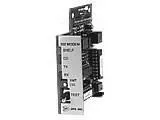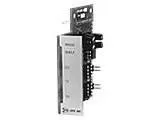Check out our White Paper Series!
A complete library of helpful advice and survival guides for every aspect of system monitoring and control.
1-800-693-0351
Have a specific question? Ask our team of expert engineers and get a specific answer!
Sign up for the next DPS Factory Training!

Whether you're new to our equipment or you've used it for years, DPS factory training is the best way to get more from your monitoring.
Reserve Your Seat Today
Alarm Distribution Shelf: ADS monitors up to 256 ground closures and distributes alarms to up to 20 users. Two shelves can be cascaded together for high density applications.
The Modular Alarm System utilizes a unique Micro-LAN Channel for communications between modules both within and without the equipment shelf. The Micro-LAN channel uses only a single pair of wires for communications. Each MAS card hosts a communications subassembly that determines its electrical interface to the communications facility. One card in a shelf becomes a "Master," hosting an RS232, RS422/485 or modem subassembly. The other cards are "slaves," hosting a Shelf-Link Subassembly. The slaves communicate through the master via the Micro-LAN Channel.
 | 202 Modem Subassembly (1200 baud) A communications subassembly for MAS modules that supports a 202T modem. Features include standard voice band operation and 1200 Baud data rate. |
 | RS232 Subassembly A subassembly for MAS modules that allows a whole shelf to communicate via a single RS232 connection, which in turns drives the Micro-LAN channel of the MAS shelf. |
 | RS422/RS485 Subassembly A subassembly for the MAS product line that allows the shelf to communicate via 4 wire RS422 or RS485. This interface accommodates transmission distances up to 4000 ft. Also can drive the Micro-LAN of the MAS shelf. |
212 Modem Subassembly (1200 baud dialup)
A subassembly for MAS modules that allows the shelf to function as dialup remote. Features include "AT" command set and TRIP compatibility.
Shelf-Link Subassembly
A subassembly for MAS modules that must reside in each "slave" MAS card to connect it to the "master" MAS card via the Micro-LAN channel.